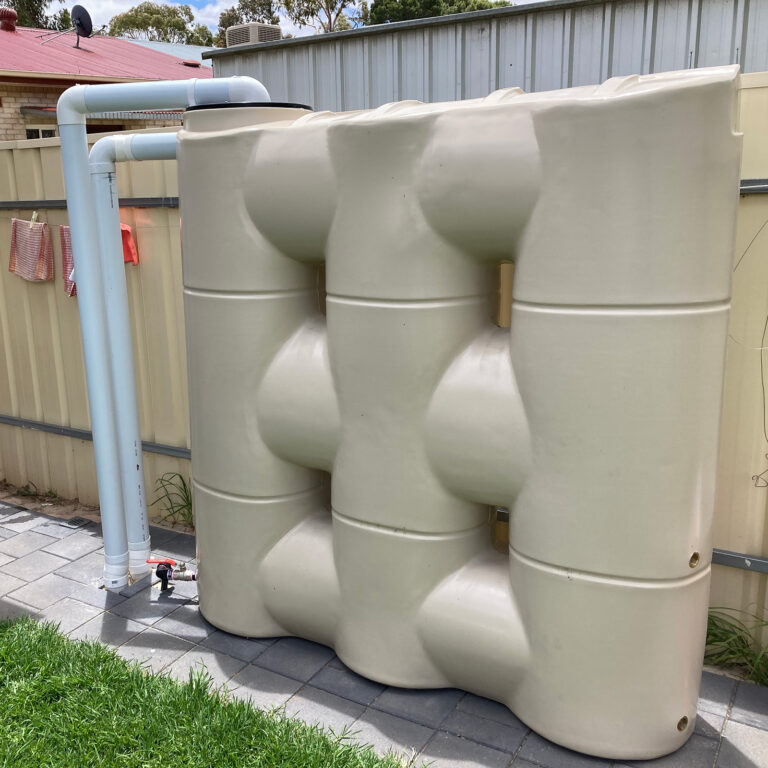Slimline Water Tanks: Space-Saving Solutions for Tiny Features
Slimline Water Tanks: Space-Saving Solutions for Tiny Features
Blog Article
Recognizing the Importance of Rainwater Containers in Drought-Prone Regions for Water Safety
In regions prone to prolonged droughts, the duty of rainwater containers in boosting water security is a subject of growing relevance. As communities grapple with the challenges of water deficiency, understanding the importance of these storage tanks exceeds mere collection of rainwater. Rainwater containers function as an essential tool in minimizing the impact of water scarcities by supplying a lasting source of water for different demands. Nonetheless, real worth of rain storage tanks extends far beyond plain storage space; it encompasses resilience-building actions and the promotion of long-term water conservation approaches. This diverse strategy to water protection warrants a more detailed examination of the duty rain containers play in ensuring a reputable supply of water during times of dry spell.
Advantages of Rainwater Containers
Using rain tanks provides a lasting remedy for augmenting water supply and enhancing water safety and security in household and commercial setups. One of the main benefits of rainwater storage tanks is their capacity to minimize reliance on keys water supply.

Rain Harvesting Methods
Rainwater harvesting strategies incorporate a variety of approaches created to efficiently accumulate and store rainwater for various objectives, adding to water conservation and sustainability. One usual method is the installation of roof catchment systems, where rain is gathered from the roof covering of a building and directed to a tank. This approach is reasonably easy and affordable. An additional prominent strategy is the usage of above-ground or underground storage space containers to save rain for later usage. These tanks are available in various dimensions and materials to suit various requirements and can be attached to the existing pipes system for very easy gain access to.

Additionally, rain yards and absorptive sidewalks are cutting-edge methods that entail landscaping or paving surface areas in such a way that allows rainwater to percolate into the ground, renewing groundwater gets. Furthermore, shape farming and terracing are farming methods that aid record rain and stop dirt disintegration in hilly terrain. By applying these varied rainwater harvesting techniques, communities can improve water protection and durability in drought-prone areas while promoting sustainable water management practices.
Relevance of Water Security
Making sure reputable accessibility to clean and sufficient water resources is vital for maintaining human wellness, financial growth, and ecological wellness. Water safety is a critical aspect of social resilience, particularly in regions prone to droughts and water shortage. Appropriate water safety includes various measurements, consisting of availability, quality, and availability of water have a peek at this site for domestic, agricultural, commercial, and ecological demands.
Water security plays a vital duty in advertising public wellness by decreasing the occurrence of waterborne conditions and ensuring cleanliness facilities. Financially, water security is vital for farming performance, commercial operations, and general financial growth. Slimline water tanks. Water security is closely connected to environmental sustainability, as it supports ecosystems, biodiversity, and general environmental balance.
In drought-prone regions, water security becomes much more critical because of the enhanced threat of water lacks. Executing techniques like rainwater harvesting, water recycling, and reliable water monitoring techniques can considerably boost water protection in these areas. By prioritizing water security, communities can much better hold up against the impacts of climate adjustment, populace growth, and use this link various other obstacles that threaten water accessibility.
Enhancing Water Durability
With raising global water challenges, developing durability in water systems has come to be a vital emphasis for sustainable growth efforts. Enhancing water durability involves executing strategies to ensure water accessibility and quality in the face of changing ecological conditions, such as dry spells, floodings, and contamination.
One trick facet of improving water strength is advertising making use of rainwater storage tanks in drought-prone areas - Slimline water tanks. Rain storage tanks act as a reliable ways of catching and saving rain for later usage, decreasing dependence on limited freshwater resources during completely dry periods. By including rainwater harvesting systems into water administration plans, neighborhoods can improve their capability to withstand water scarcity and maintain water safety and security

Sustainable Water Preservation
Amidst rising water difficulties, the sensible management of water resources with lasting conservation you could look here practices is necessary for making certain lasting ecological stability and social health. Lasting water preservation requires the reliable use water resources to fulfill present demands without endangering the capacity of future generations to fulfill their own requirements. By implementing approaches such as rainwater harvesting, greywater recycling, and water-efficient technologies, areas can lower water wastage and minimize stress on freshwater sources.
In addition, sustainable water conservation methods add to ecosystem health and wellness by maintaining adequate water levels in rivers, lakes, and wetlands, sustaining biodiversity, and protecting all-natural habitats. These practices likewise play a crucial duty in mitigating the influences of climate adjustment by aiding to adjust to altering rainfall patterns and water availability.

Conclusion
Finally, rain containers play a vital role in improving water safety and security and durability in drought-prone areas. By making use of rainwater harvesting strategies, neighborhoods can reduce their dependence on traditional water sources and promote sustainable water conservation techniques. This not only helps mitigate the influences of water scarcity during droughts yet also adds to long-term water security and strength in the face of climate change challenges.
Report this page